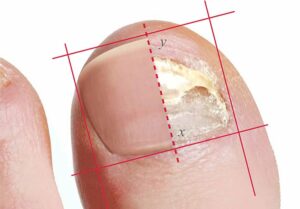If you’ve been experiencing persistent heel pain, particularly when taking your first steps in the morning or upon standing after a period of rest, you may be dealing with plantar fasciitis. This common condition can cause discomfort and limit your daily activities. Understandably, patients are eager to find out the cause of their pain and seek effective treatments. The best podiatrist in Sugar Land, TX, Dr. Vargas at Vargas Foot and Ankle Specialists, has the expertise to diagnose, manage, and treat plantar fasciitis. In this blog, we’ll delve into the underlying causes of plantar fasciitis and the steps you can take toward reclaiming your pain-free life.
Understanding Plantar Fasciitis
Plantar fasciitis is the inflammation of the plantar fascia, a band of connective tissue that stretches from your heel to your toes, providing support for the arch of your foot. This tissue acts as a shock absorber, bearing the brunt of the pressure exerted on your feet during activities like walking or running. However, excessive strain and stress on the fascia can cause micro-tears and inflammation, leading to plantar fasciitis. The condition can cause sharp, stabbing pain in the heel or arch of the foot and can be debilitating if left untreated.
The Leading Causes of Plantar Fasciitis
Several factors may contribute to the development of plantar fasciitis. These include:
- Age: The risk of developing plantar fasciitis increases with age, particularly between the ages of 40 and 60 years.
- Biomechanics: Faulty foot mechanics like flat feet, high arches, or abnormal gait can distribute weight unevenly during movement, stressing the plantar fascia.
- Occupation: Jobs that require long periods of standing or walking on hard surfaces can put excessive strain on the plantar fascia.
- Obesity: Carrying extra weight increases the pressure on your plantar fascia.
- Exercise: Activities that put repetitive stress on your heel, like running or dancing, up the risk of plantar fasciitis.
Diagnosing Plantar Fasciitis
A thorough evaluation by a skilled podiatrist like Dr. Vargas is essential for an accurate diagnosis. A comprehensive foot examination may include a review of your medical history and a physical examination of the foot. The podiatrist may also request imaging studies like X-rays or MRIs to rule out other potential foot problems.
Effective Treatment Options
Dr. Vargas and his team at Vargas Foot and Ankle Specialists strive to provide the best treatment options for their patients. Primary treatment options for plantar fasciitis include:
- Rest, ice, and elevation: This conservative approach helps reduce inflammation and relieve discomfort.
- Physical therapy: A customized exercise program can stretch and strengthen the plantar fascia, supporting a quicker recovery.
- Orthotics: Custom-made shoe inserts can help distribute pressure evenly, easing the strain on the plantar fascia.
- Medication: Anti-inflammatory medications can alleviate pain and inflammation.
- Corticosteroid injections: For severe cases, your podiatrist may recommend a corticosteroid injection to reduce inflammation, providing temporary relief.
- When conservative treatments aren’t enough, advanced options like extracorporeal shock wave therapy (ESWT) or minimally invasive surgery may be considered.
Preventing Plantar Fasciitis Recurrence
At Vargas Foot and Ankle Specialists, the goal isn’t just to treat your immediate symptoms but to help prevent plantar fasciitis from recurring. This could include:
- Regular stretching exercises for the plantar fascia and calf muscles
- Wearing supportive and well-cushioned shoes
- Maintaining a healthy weight
- Gradually increasing the intensity and duration of exercise.
Your path to recovery from plantar fasciitis begins with understanding its causes and seeking the help of an experienced podiatrist. Dr. Vargas at Vargas Foot and Ankle Specialists has a proven track record of diagnosing and treating this condition with personalized care and unmatched expertise. Don’t let plantar fasciitis limit your life any longer – book your appointment today to check your health and take your first steps toward lasting relief.
To Healthy Feet,
Dr. Marco Vargas DPM, FACFAS
















